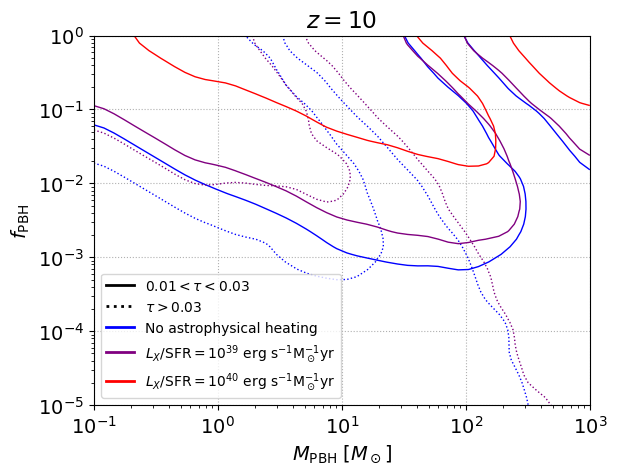Python codes for computing the number of absorption features of the 21 cm forest in scenarios with Primordial Black Holes as Dark Matter.
See the paper arXiv:2104.10695 for more details.
The program computes the number of absorbers expected in Cold Dark Matter (CDM) and Primordial Black Holes (PBH) cosmologies. For that, the Intergalactic Medium (IGM) temperature is required. The code makes use of the temperature computed from semianalytic simulations carried out with 21cmFAST (arXiv:1003.3878). The global outputs for several realizations, which include the temperature evolution, are included in the folder 21cmFiles.
The main scripts are the following:
-
Absorbers.py: main code to compute the number of absorption features for CDM and PBH models. It makes use of the temperature from the21cmFilesfiles, or employs the temperature previously interpolated fromInterpolateTemperature.py. It calls the scriptImpactParam.pyfor employing the effective cross sections if they are not previously calculated. It can also plot the smoothed bounds on the PBH parameter space callingAbundanceBounds.py. -
ImpactParam.py: computes the maximum impact parameter, which defines the effective cross section of a given halo mass. -
InterpolateTemperature.py: interpolates the IGM temperature from the21cmFilesfiles on a grid of the PBH mass and PBH fraction.
Several plotting scripts are also included:
-
PreliminaryPlots.py: plots the gas density profile, the spin temperature and the optical depth. -
PowerSpectrumPlots.py: shows the power spectrum, the variance and the halo mass function. -
TemperaturePlot.py: creates a figure of the IGM temperature from the21cmFilesfiles. -
AbundanceBounds.py: interpolates a grid of bounds previously computed inAbsorbers.pyand plots the upper limits on the PBH abundance.
In the folder Source, several auxiliary routines are defined:
-
constants.py: includes the definition of physical and cosmological constants, together with some parameters regarding the number of bins. -
functions.py: includes several useful cosmological functions, to compute the density profile, power spectrum, halo mass function and 21 cm quantities.
The code is written in Python3, and makes use of several Python libraries, which are:
- numpy
- matplotlib
- scipy
- pickle
The package for cosmological computations Colossus is also employed.
If you use the code, please link this repository, and cite arXiv:2104.10695 and the DOI 10.5281/zenodo.4707447.
For comments, questions etc. you can reach me at pablo.villanueva.domingo@gmail.com

